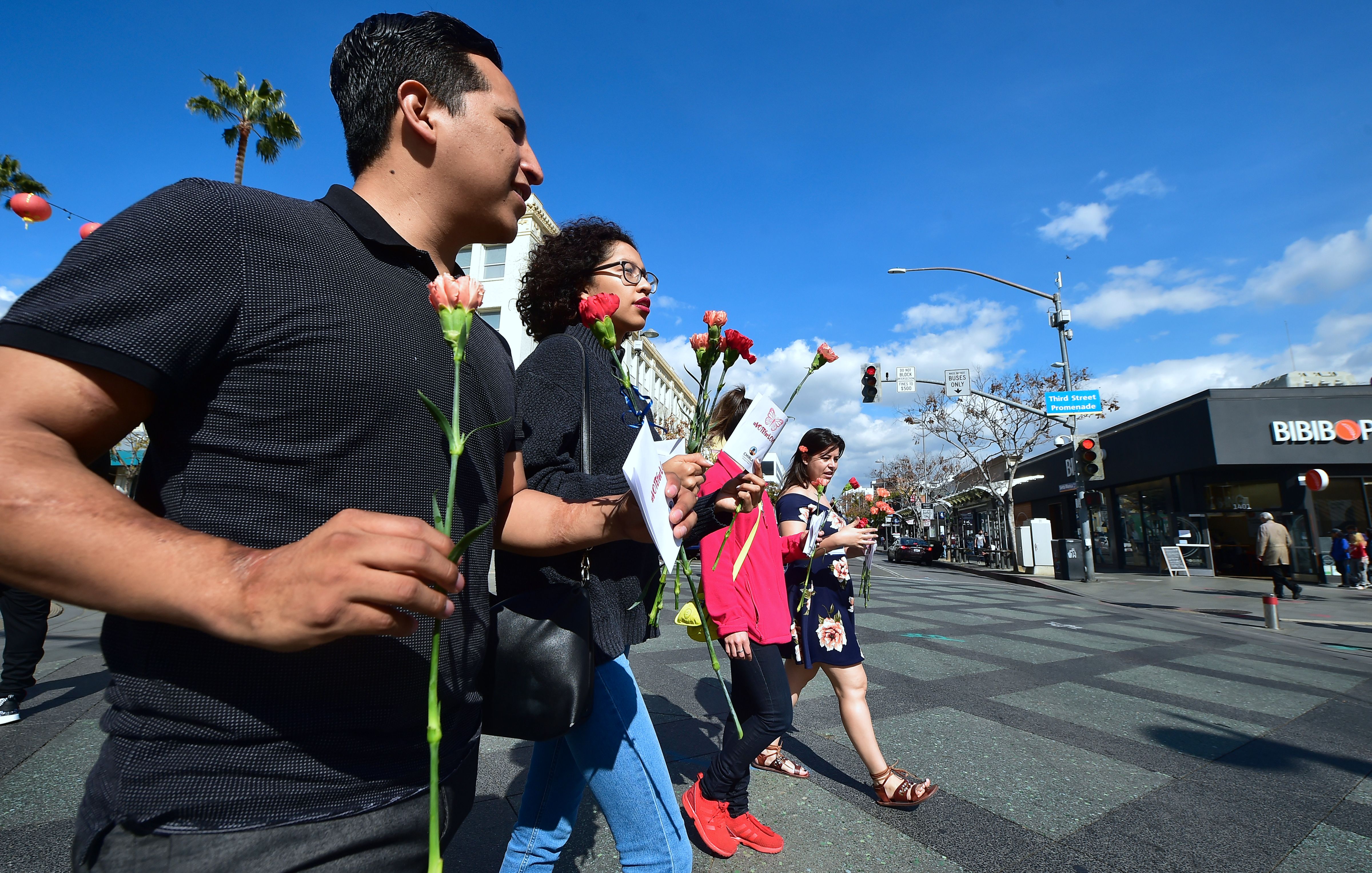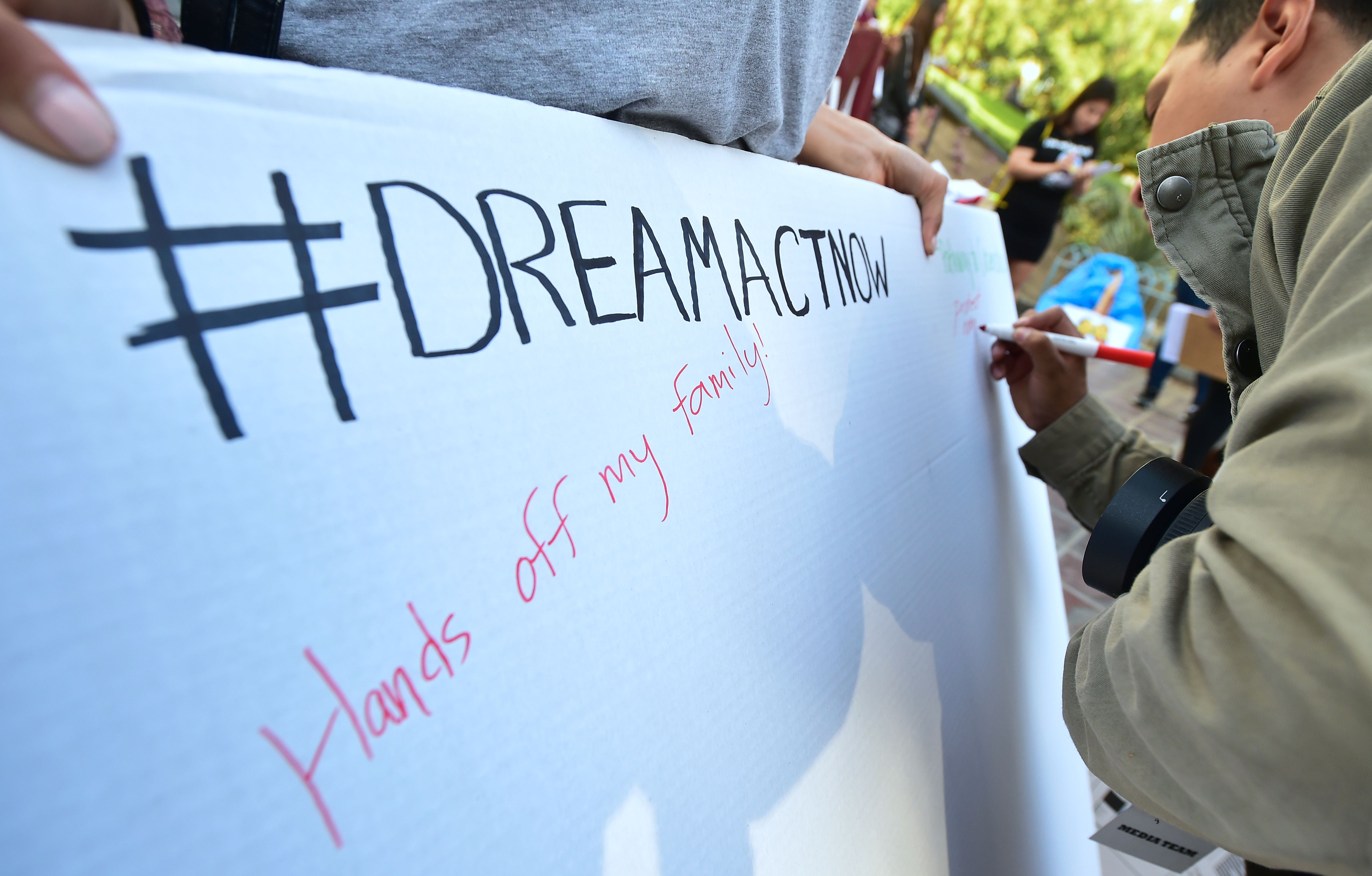
Getty Judge John Bates
John D Bates is the federal district judge who has ordered the Trump administration to reinstate the DACA program within 20 days. DACA, or Deferred Action for Childhood Arrivals, is the program that defers deportation for certain people who arrived illegally in the US as children.
Last September, President Trump announced plans to end DACA. He also challenged Congress to write a new law that would allow DACA recipients to remain in the US legally. But after the White House annnounced its plans to phase out DACA, courts ordered the administration to continue accepting new DACA applicants.
On Friday, the 72 year old Judge Bates said that the administration must fully re-instate DACA. But he gave the White House a 20 day window in which to appeal his decision.
You can read the full text of his legal ruling here.
Here’s what you need to know.
1. Bates Said Trump’s Decision to End DACA Was ‘Abitrary and Capricious’ — A Legal Term That Can Imply Abuse of Power

GettyJudge John D Bates
In September 2017, the Trump administration announced plans to end the DACA program. Bates said on Friday that this decision was “arbitrary and capricious.”
“Arbitrary and capricious” is a legal term which means doing something according to one’s will, or “caprice” — instead of doing something based on law or on justice. The term “arbitrary and capricious” implies that there has been an abuse of power.
Bates said President Trump’s decision in September to end the program was “arbitrary and capricious” — and he said the Department of Homeland Security’s “legal judgment” was “inadequately explained.”
Judge Bates first used the phrase “arbitrary and capricious” in April, when he first ordered the Trump administration to start accepting DACA applicants again. Back in April, he granted the administration 90 days to come up with a legal justification for ending DACA. The 90 days have just expired, which is why the case landed on Judge Bates’ lap again.
2. Bates Said The Administration Hadn’t Put Forward A Convincing Legal Argument to End DACA

DACA protesters
The DACA case first came before Judge Bates back in April. At that time, he gave the Trump administration 90 days to create a legal argument that would justify ending DACA.
On Friday, he said that the government had not provided any good reason for him to change his earlier decision. He said that the so-called Nielson memo (the government’s memo on why DACA should end) had nothing new in it, and that it totally ignored most of the points made by its critics.
He said the governmnent’s case still rests almost entirely on a one-page memo by Jeff Sessions — and he said that this memo “inadequately explained” its own legal arguments.
And he wrote that the new memo, in his words, “fails to elaborate meaningfully on the agency’s primary rationale for its decision: the judgment that the policy was unlawful and unconstitutional.”
You can read the full text of Judge Bates’ decision here.
3. Bates Gave the Trump Administration A 20 Day Window to Appeal His Ruling

DACA rally in March 2018
In his ruling, Bates said that the Department of Homeland Security does have the right to end DACA — but only if they can prove that they are doing it for good reason.
He wrote, “if DHS wishes to rescind the program—or to take any other action, for that matter—it must give a rational explanation for its decision.”
He said the government has to offer more than “a hodgepodge of of illogical or post hoc policy assertions” if it wants to end the DACA program.
But he also granted the administration 20 days in case they want to appeal his decision.
4. Judge Bates First Ordered Trump to Re-Instate DACA Back in April. On Friday, He Repeated That Ending DACA Would Be ‘Illegal’

GettyPro-DACA protesters in March 2018
In April this year, Judge Bates first heard the argument against DACA.
The case was brought by the NAACP, Princeton University, and Microsoft. You can read their filing here.
In April, Judge Bates ruled that ending DACA would be unlawful. But he told the administration to prepare a memo setting out its legal basis for ending the program. On Friday, he ruled that the memo had failed to present new information, and that it was not convincing. He ruled, therefore, that it would be illegal for DACA to be ended.
5. Bates, a Vietnam Vet, Was Appointed to the District Court by President George W Bush. He Is Married With Three Children
Bates is the senior judge on the federal district court in Washington, D.C. He was appointed to that court in December 2001, by then-president George W Bush.
Bates was born in Elizabeth, New Jersey in 1946. He graduated from Wesleyan University in 1968 and got his law degree from the University of Maryland in 1976.
He served in the US Army from 1968 to 1971. During that time, he did a tour in Vietnam.
Bates is married to Carol Ann Rhees, a former lawyer. They lives in Bethesda, Maryland, and have three children.